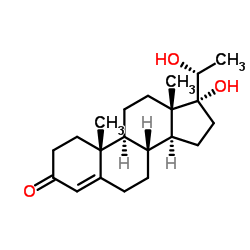Epidermal growth factor receptor binding and biological activity in the ovary of goldfish, Carassius auratus.
D Pati, K Balshaw, D L Grinwich, M D Hollenberg, H R Habibi
Index: Am. J. Physiol. 270(5 Pt 2) , R1065-72, (1996)
Full Text: HTML
Abstract
The receptor binding and biological activity of epidermal growth factor-urogastrone (EGF) was characterized in the follicle-enclosed goldfish oocyte. The binding of 125I-labeled mouse EGF (mEGF) to goldfish ovarian membrane preparation was peptide specific, saturable, reversible, and dependent on time and tissue concentration. Binding data analysis indicated the presence of a single class of high-affinity binding sites with an estimated equilibrium dissociation constant of 4.4 +/- 1.8 x 10(-10) M. The 125I-mEGF binding was displaced by unlabeled mEGF and by human recombinant transforming growth factor-alpha (hTGF-alpha). Both mEGF and hTGF-alpha were found to stimulate reinitiation of oocyte meiosis, as indicated by germinal vesicle breakdown (GVBD). Treatment with mEGF and hTGF-alpha stimulated GVBD from a basal level of 8.5 to approximately 30% with an estimated half-maximal effective dose for EGF of 5.80 +/- 0.82 + 10(-10) and for hTGF-alpha, 1.9 +/- 1.0 x 10(-10) M. Furthermore, treatment with mEGF marginally increased 17 alpha, 20 beta-dihydroxy-4-pregnen-3-one (DHP)-induced GVBD without significantly influencing the gonadotropin-induced response. Treatment with either mEGF or hTGF-alpha significantly reduced human chorionic gonadotropin-stimulated testosterone production in a concentration-related manner. These data suggest that members of the EGF family may play a role in the regulation of ovarian function in goldfish.
Related Compounds
| Structure | Name/CAS No. | Molecular Formula | Articles |
|---|---|---|---|
 |
(20R)-17,20-Dihydroxypregn-4-en-3-one
CAS:1662-06-2 |
C21H32O3 |
|
Changes in expression of genes encoding gonadotropin subunit...
2003-01-01 [Endocrine 20(1-2) , 23-34, (2003)] |
|
Dispersion of cyclin B mRNA aggregation is coupled with tran...
2001-01-15 [Dev. Biol. 229(2) , 421-31, (2001)] |
|
Diethylstilbestrol induces fish oocyte maturation.
2004-03-09 [Proc. Natl. Acad. Sci. U. S. A. 101(10) , 3686-90, (2004)] |
|
Steroid metabolism by ovarian follicles of the sea bass Dice...
2000-01-01 [Comp. Biochem. Physiol. C. Toxicol. Pharmacol. 125(1) , 85-91, (2000)] |
|
Effects of the aromatase inhibitor Fadrozole on plasma sex s...
1999-02-01 [Gen. Comp. Endocrinol. 113(2) , 221-9, (1999)] |